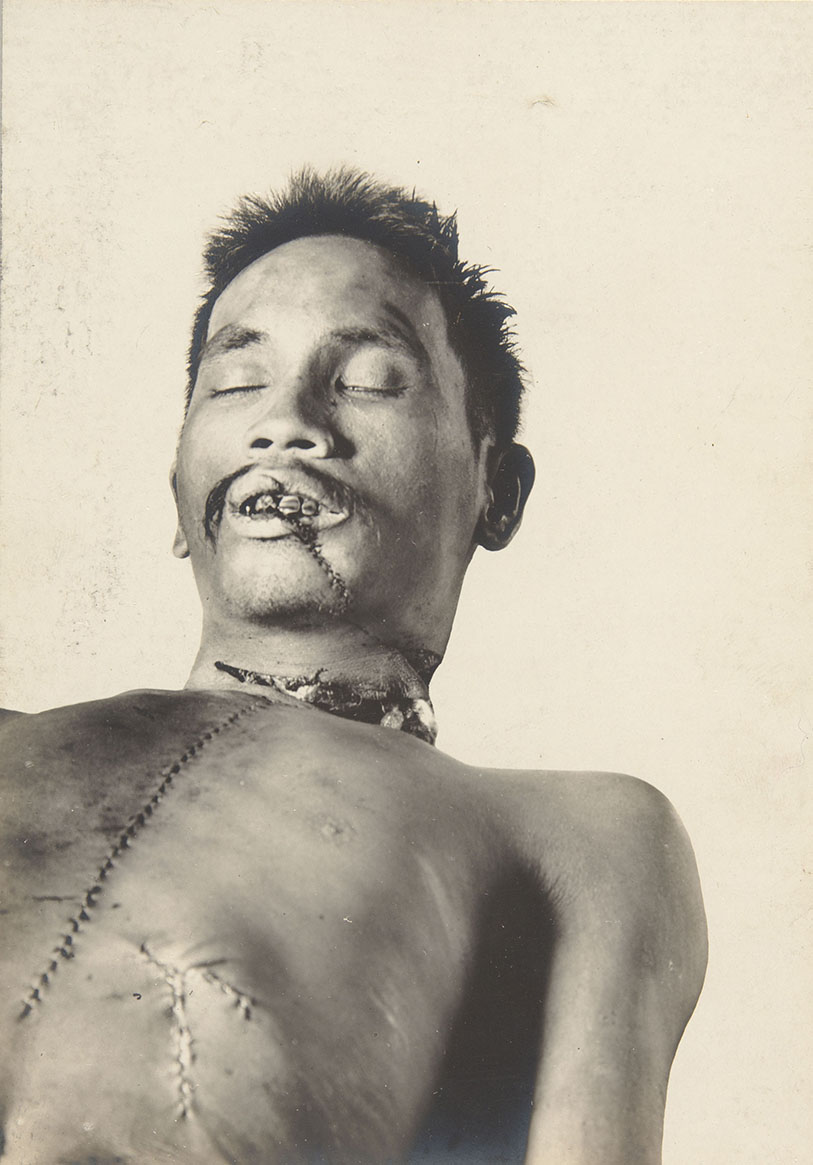In the present time marked by a continuing plague of unresolved political and extrajudicial killings, forensic pathologist Dr. Raquel Fortun has become a fixture in our quest for answers. Be it the killings related to the Duterte administration’s anti-illegal drug campaign which has targeted the Filipino poor since 2016, or the worsening attacks on red-tagged activists by state forces, we give importance and credence to her opinion. It was a natural impetus for me to turn to her and request that she take a look at the photographs of Felizardo that can be found in the collection.
——–
Only 4 pics, very limited info. Pictures were taken not really as forensic photodocumentation. Angle not directly perpendicular, no scale (ruler next to the image as reference), no orienting and close-up shots.
Images are photoshopped with details cropped apparently. Interesting to see originals with background, other items like the head block (used to prop up the head Pic 2) and clothes (was he wearing shorts or something was covering the genitals?).
In one pic (Pic 3) there appears to be a tag (block?). Tried to zoom in and flip it. Relevance? I see “3 — SW E— TAC—“
Subject appears to be a young adult male, could be Filipino as claimed. Facial features, black hair, moustache, hair on legs. Slightly muscular build. Age probably at least 20, 20s-30s? Hair style might indicate something too; was that common among the ladrones? The scars are nonspecific but do help identify.
Interesting front midline sutured incision that must be the “postmortem” referred to in Pic 1 caption. Not the Y-incision of trained pathologists, just a straight look-see cut still common in “medico-legal” examinations today. Just the same it appears that as early as back then “postmortem examinations” were already being done. American system or Spanish influence?
There are other sutured lesions on the body. Linear and vertical on the right upper abdomen, stellate and irregular on the left upper abdomen. The first one is the usual site for trocar insertion (usually small though) but what was embalming like in 1906? This body appears well preserved, no signs of decomposition was it photographed soon after death or embalmed? The sutured lesion on the left is difficult to ascertain because of the shape (injury that was repaired?), it appears postmortem too (not hemorrhagic like the midline incision?). Lip and chin injuries are also sutured but not those in the neck. Again I am not clear about embalming norms back then. Probably the face was reconstructed for viewing.
There are signs of violent assault identified as “bolo cuts” so this is clearly homicide. These are the lip, chin and neck injuries which are consistent with hacking wounds. The deep neck injuries in particular could explain cause of death. There appear to be blunt force trauma too, above the left eyebrow, chest and right leg. Maybe abrasions and contusions sustained such as from a fall terminally. But this is speculative of course.
Raquel B. Del Rosario Fortun, MD Professor and Chair
Department of Pathology
College of Medicine
University of the Philippines Manila
Response to a Referral by Kiri Dalena
10 December 2020
